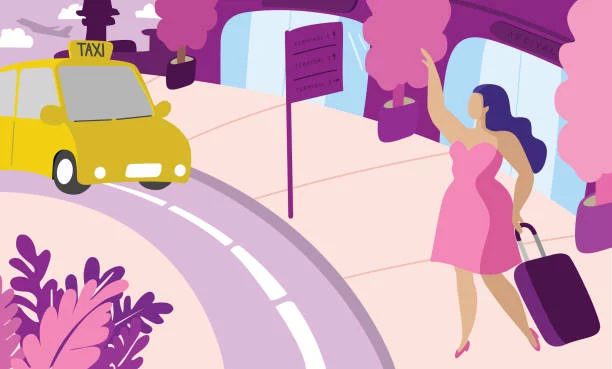From College Campus to City Streets
Lyft wasn’t born in a boardroom with slick suits and corporate ambition—it started with a simple idea, rooted in practicality and community. In 2007, two entrepreneurs, Logan Green and John Zimmer, met through a mutual friend and connected over a shared interest in transportation reform. Green, a UC Santa Barbara graduate, had been tinkering with a ride-sharing concept he called “Zimride,” named after a Zimbabwean carpooling system he’d seen during his travels. The system relied on social networks to connect drivers with empty seats to passengers headed in the same direction.
Green and Zimmer saw an opportunity to modernize how people traveled, especially in places where public transit lagged behind growing urban populations. Zimride began as a ride-matching service for long-distance trips, particularly between college campuses and major cities. It grew modestly but steadily, used mostly by students heading home for holidays or weekend getaways. It was smart, simple, and sustainable—but it wasn’t yet a disruptor.
That changed in 2012, when the duo launched a side project that would become the main event: Lyft. Unlike Zimride, which focused on planned trips, Lyft offered on-demand rides through a smartphone app. What made Lyft stand out in its early days wasn’t just the service itself—it was the experience. Riders were encouraged to sit in the front seat, chat with their drivers, and even offer fist bumps. Cars sported fuzzy pink mustaches on their grilles, a quirky symbol that said, “This isn’t a cab. This is different.”
The Rise of Ridesharing Culture
Lyft’s launch in San Francisco came at the perfect moment. Smartphones had become mainstream, GPS technology was reliable, and people were growing increasingly comfortable with peer-to-peer services like Airbnb and TaskRabbit. Plus, traditional taxi services hadn’t evolved much in decades. They were often inconvenient, inconsistent, and in many cities, difficult to hail without standing on a corner. Lyft gave people a new kind of freedom: the ability to summon a ride in minutes with just a few taps, often at a lower cost than a taxi.
Despite legal hurdles and pushback from the taxi industry, Lyft expanded quickly. Within a few years, it was operating in dozens of cities across the U.S., competing head-to-head with Uber, which had launched a few years earlier. While Uber took a more aggressive, global approach to expansion, Lyft focused on the U.S. market, slowly building trust with both riders and drivers. The company leaned into its brand as the “friendlier” alternative, emphasizing transparency, community values, and social good.
By the mid-2010s, Lyft had dropped the pink mustaches and encouraged more professional conduct, but the spirit of its origins still lingered. It was a tech company, yes, but also a transportation company that believed in evolving city life through shared mobility. Eventually, Lyft acquired Zimride from itself and formally shut the original service down, consolidating its efforts under the more scalable, on-demand platform.
Innovation, Expansion, and Challenges
Over time, Lyft evolved beyond simple car rides. The company ventured into bikes and scooters, adding new mobility options for users in urban environments. It partnered with cities to support public transportation initiatives and even began exploring autonomous vehicles in partnership with other tech firms. The ambition grew with the company: to reduce the number of personal vehicles on the road, cut down on emissions, and offer people alternatives to car ownership.
But growth came with its challenges. Like its competitors, Lyft faced criticism over driver pay, safety issues, and the classification of drivers as independent contractors rather than employees. Lawsuits and legislation tested the company’s model in California and other states. Lyft also had to build out safety features, such as in-app emergency buttons, background checks, and ride-tracking systems, in response to public demand for safer rider-driver experiences.
In 2019, Lyft went public, debuting on the NASDAQ with an initial valuation of over $20 billion. It was a major milestone, but also a signal of changing times. Investors wanted growth, but they also wanted profitability—a tall order for a company still spending heavily to compete and innovate. Then came the COVID-19 pandemic, which sent ridership plummeting. Like many transportation companies, Lyft had to pivot quickly, focusing on safety measures, food and package delivery pilots, and supporting essential workers.
When Things Go Wrong: Legal Considerations
As rideshare services have become a part of daily life, so have the risks that come with them. While Lyft has done much to improve rider and driver safety, accidents still happen, often leaving passengers unsure of their rights. The legal framework around rideshare liability is more complex than a standard car accident. Was the driver “on the clock”? Whose insurance applies—Lyft’s, the driver’s, or another party’s?
That’s where a Minnesota Lyft accident lawyer becomes essential. In Minnesota, as in other states, determining fault and securing compensation after a Lyft accident requires a clear understanding of both local traffic laws and rideshare-specific insurance policies. A qualified lawyer can help navigate these complexities, especially in cases where injuries, medical costs, or loss of income are involved. Their job is to make sure victims don’t get lost in corporate red tape or pressured into accepting inadequate settlements.
The involvement of a lawyer doesn’t mean a case is headed straight for court. Many cases are resolved through negotiation. But having legal support early in the process can mean the difference between a smooth recovery and an uphill battle with insurance adjusters who are more interested in protecting their bottom line than your well-being.
Lyft’s Lasting Impact on Transportation
Lyft didn’t invent the idea of carpooling or private transportation, but it reimagined what it could be in a digital age. It challenged outdated systems, gave millions of people a new way to get around, and helped make mobility more flexible and accessible. Even as the industry continues to evolve—with electric vehicles, automated driving, and integrated public transit—Lyft remains a central figure in that movement.
What began as a scrappy idea between two idealists has grown into a staple of American urban life. And despite its challenges, Lyft continues to push forward, shaping how we think about getting from one place to another—not just efficiently, but safely, affordably, and with a little more humanity along the way.

Lexy Summer is a talented writer with a deep passion for the art of language and storytelling. With a background in editing and content creation, Lexy has honed her skills in crafting clear, engaging, and grammatically flawless writing.



